STATUETTE DE CHITIPATI EN PAPIER-MÂCHÉ POLYCHROMEMONGOLIE, XIXE SIÈCLE Himalayan Art Resources item no. 205036 61cm (24 in.) high FootnotesA POLYCHROMED PAPIER-MÂCHÉ FIGURE OF CHITIPATI MONGOLIA, 19TH CENTURY 蒙古 十九世紀 紙塑加彩屍陀林主像 Constructed of papier-mâché and clay, this pair of dancing chitipati evoke the transience of time. Each wears a diadem of five skulls and holds spiritual implements while dancing in an aureole of flames, in a fierce display showing the transitional world between life and death. As noted by Linrothe, (Demonic and Divine, 2004, p. 128. 'historically there were two iconographic traditions of depicting Chitipati in Tibetan art: the Sakya tradition, where the male and female skeletons hold the same attributes in their hands, and the Gelugpa tradition, where the attributes are different. This sculpture clearly belongs to the Gelugpa tradition. Chitipati 'Lord of the funeral pile'; dur khrod bdag po cam dral Master of the cemetery - brother and sister), present one of the most intriguing deities of the Tibetan pantheon. Originally, they were conceived as attendants of the Lord of Death, Yama, and later became independent deities. The symbolism of the happily dancing pair lies deep within the tenets of Buddhist philosophy. They represent the fundamental ideas of the unity of two polarities and of Ultimate Enlightenment, which overcomes the limitations of the sensational world. A popular subject in Mongolia, the couple are protector deities linked to the Secret Essence Wheel Tantra associated with the root Chakrasamvara Tantra. The subject is depicted on masks, thangkas, applique, metal sculpture, and furniture specifically during the 19th century in Mongolia. Other polychrome examples from Mongolia show almost identical iconography including one illustrated on HAR 18444. Exhibited: Remember That You Will Die, Rubin Museum of Art, New York, 19 March - 9 August, 2010. Provenance: Ashencaen and Leonov, London, 2000s
STATUETTE DE CHITIPATI EN PAPIER-MÂCHÉ POLYCHROMEMONGOLIE, XIXE SIÈCLE Himalayan Art Resources item no. 205036 61cm (24 in.) high FootnotesA POLYCHROMED PAPIER-MÂCHÉ FIGURE OF CHITIPATI MONGOLIA, 19TH CENTURY 蒙古 十九世紀 紙塑加彩屍陀林主像 Constructed of papier-mâché and clay, this pair of dancing chitipati evoke the transience of time. Each wears a diadem of five skulls and holds spiritual implements while dancing in an aureole of flames, in a fierce display showing the transitional world between life and death. As noted by Linrothe, (Demonic and Divine, 2004, p. 128. 'historically there were two iconographic traditions of depicting Chitipati in Tibetan art: the Sakya tradition, where the male and female skeletons hold the same attributes in their hands, and the Gelugpa tradition, where the attributes are different. This sculpture clearly belongs to the Gelugpa tradition. Chitipati 'Lord of the funeral pile'; dur khrod bdag po cam dral Master of the cemetery - brother and sister), present one of the most intriguing deities of the Tibetan pantheon. Originally, they were conceived as attendants of the Lord of Death, Yama, and later became independent deities. The symbolism of the happily dancing pair lies deep within the tenets of Buddhist philosophy. They represent the fundamental ideas of the unity of two polarities and of Ultimate Enlightenment, which overcomes the limitations of the sensational world. A popular subject in Mongolia, the couple are protector deities linked to the Secret Essence Wheel Tantra associated with the root Chakrasamvara Tantra. The subject is depicted on masks, thangkas, applique, metal sculpture, and furniture specifically during the 19th century in Mongolia. Other polychrome examples from Mongolia show almost identical iconography including one illustrated on HAR 18444. Exhibited: Remember That You Will Die, Rubin Museum of Art, New York, 19 March - 9 August, 2010. Provenance: Ashencaen and Leonov, London, 2000s

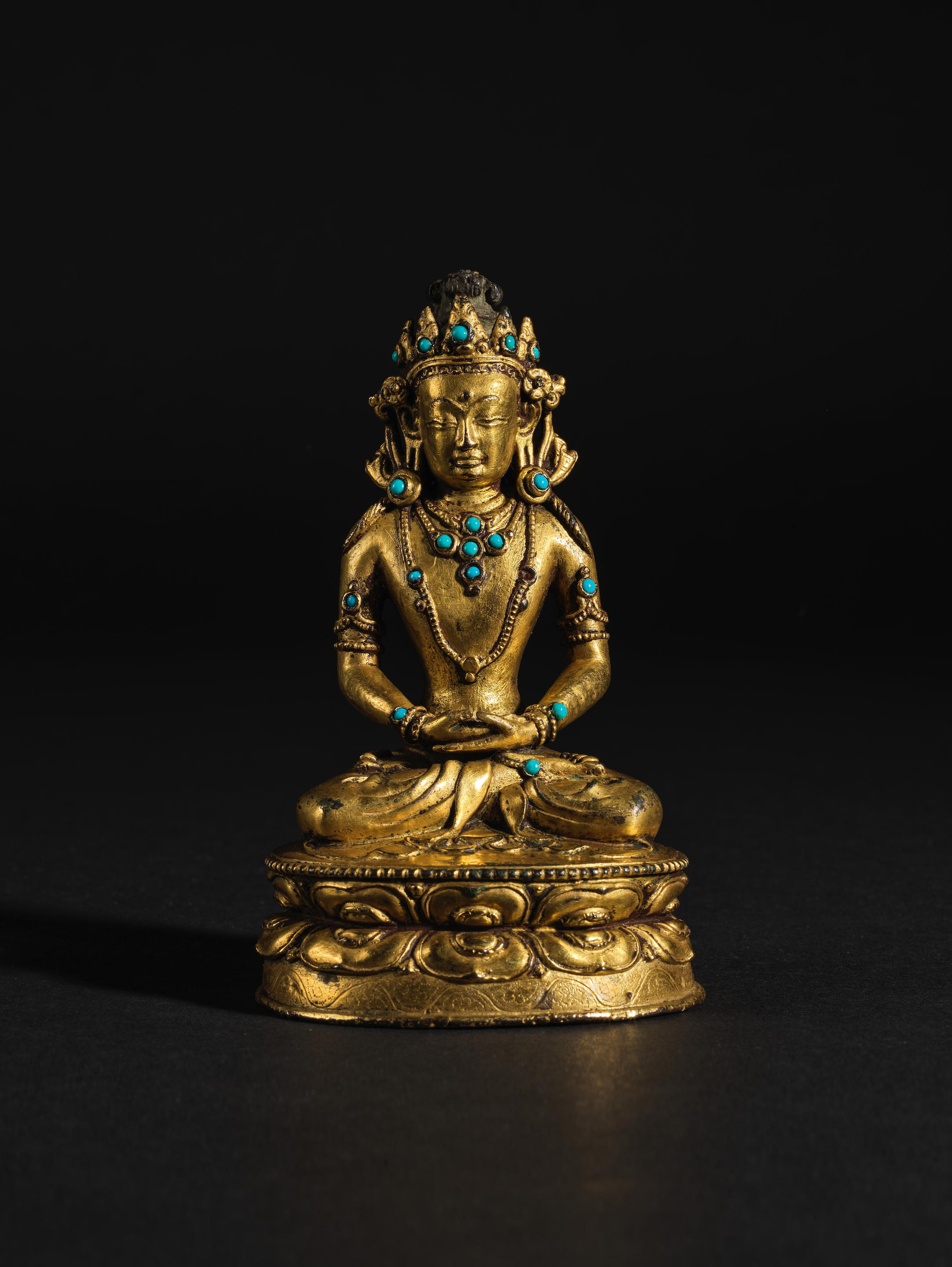

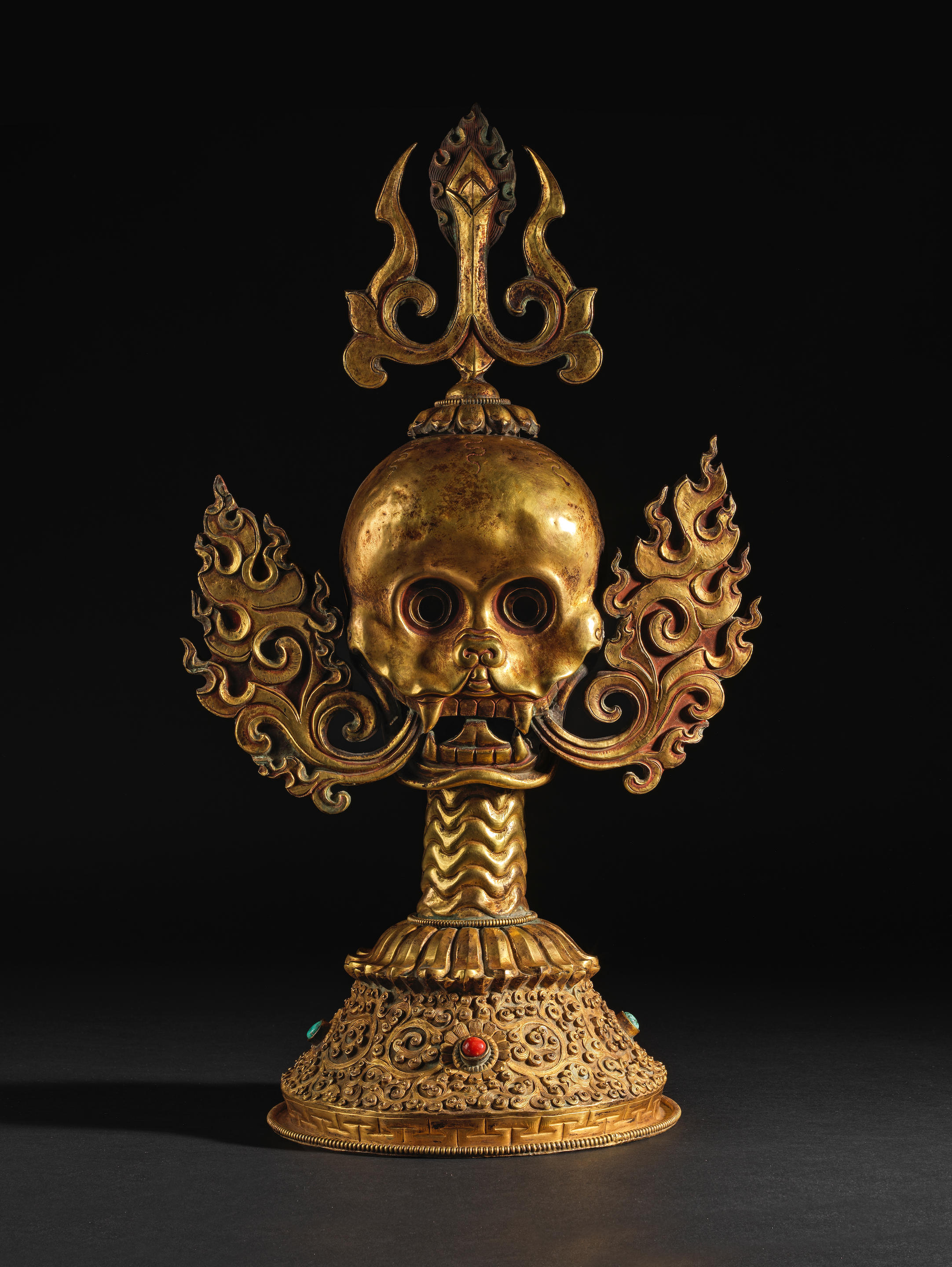
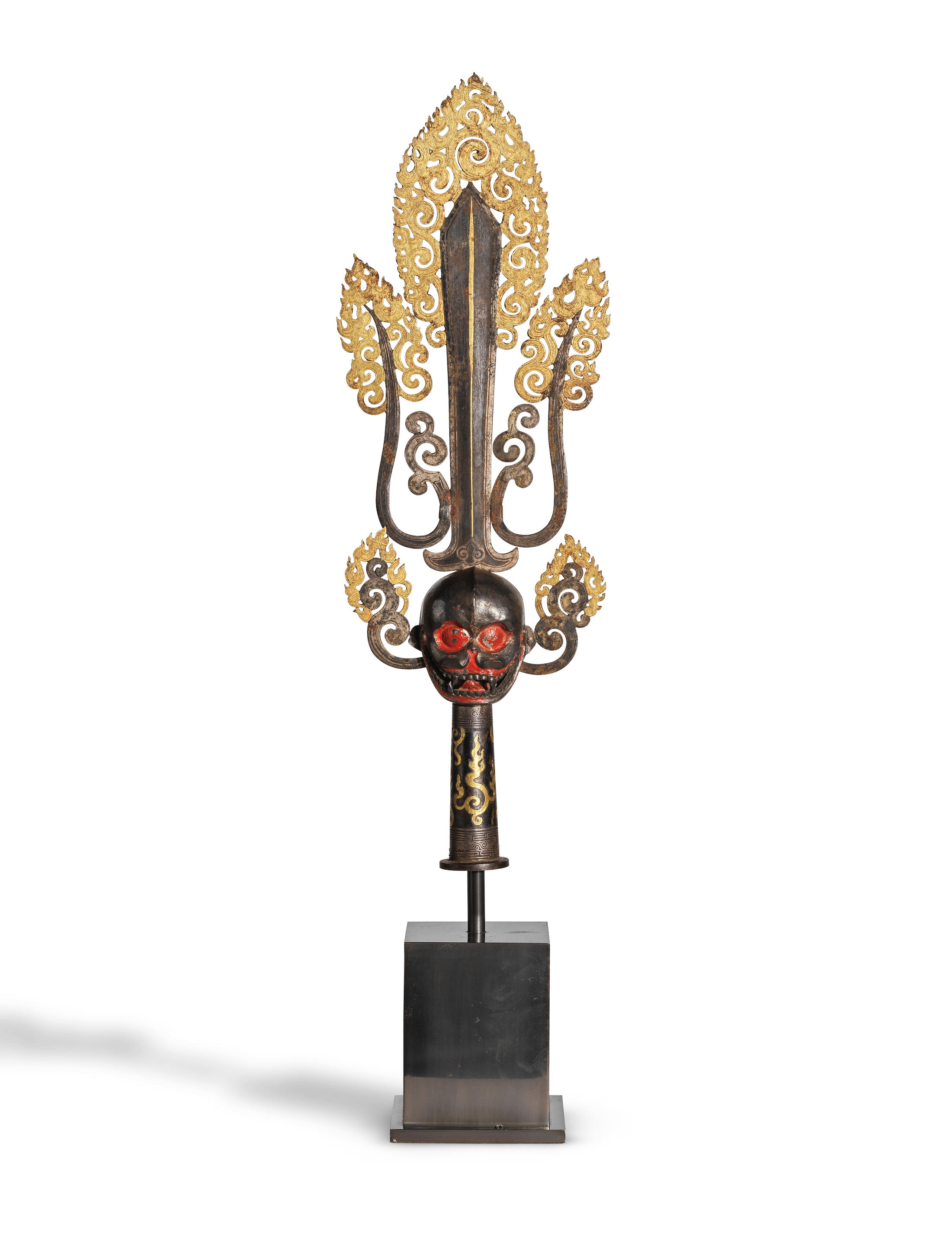
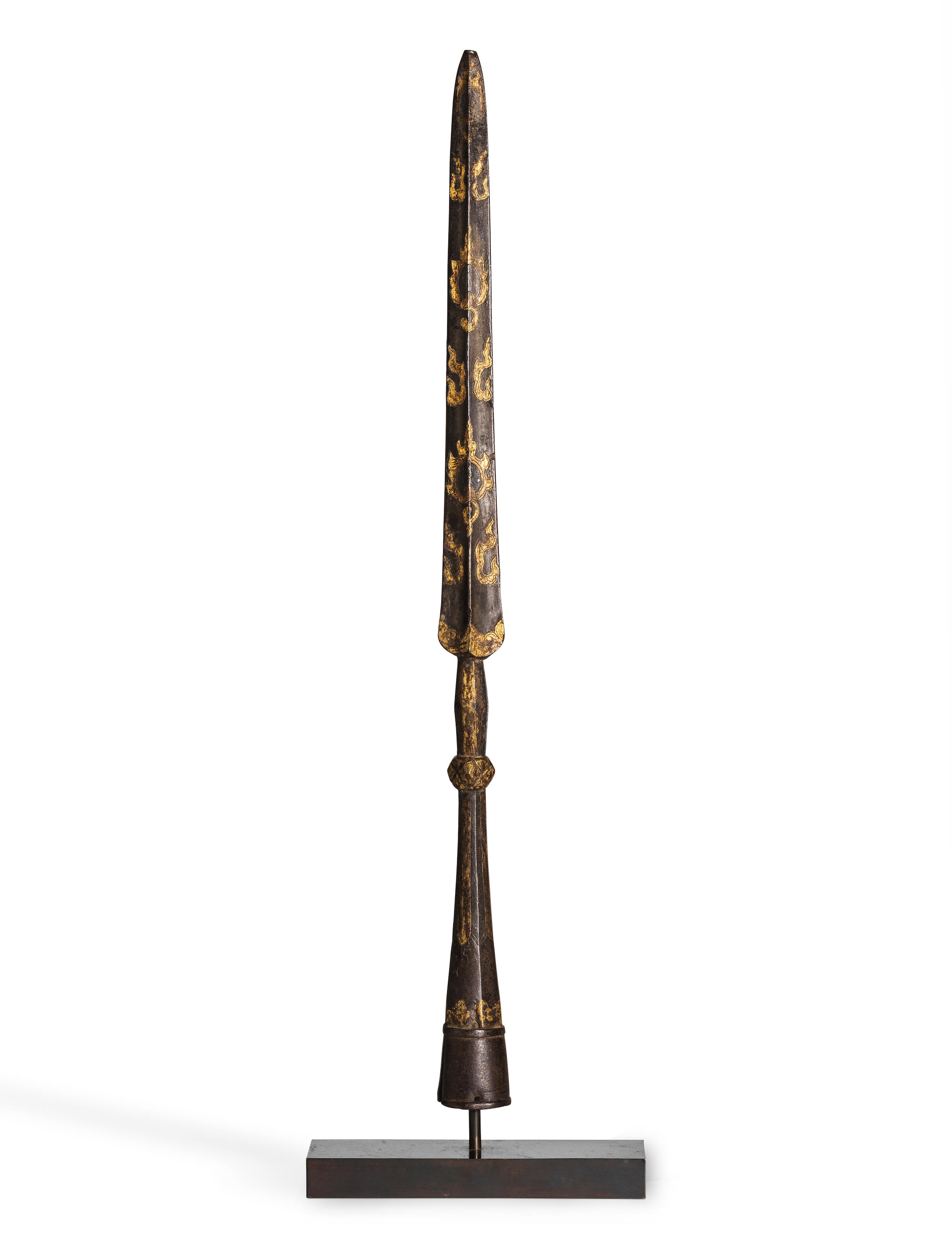
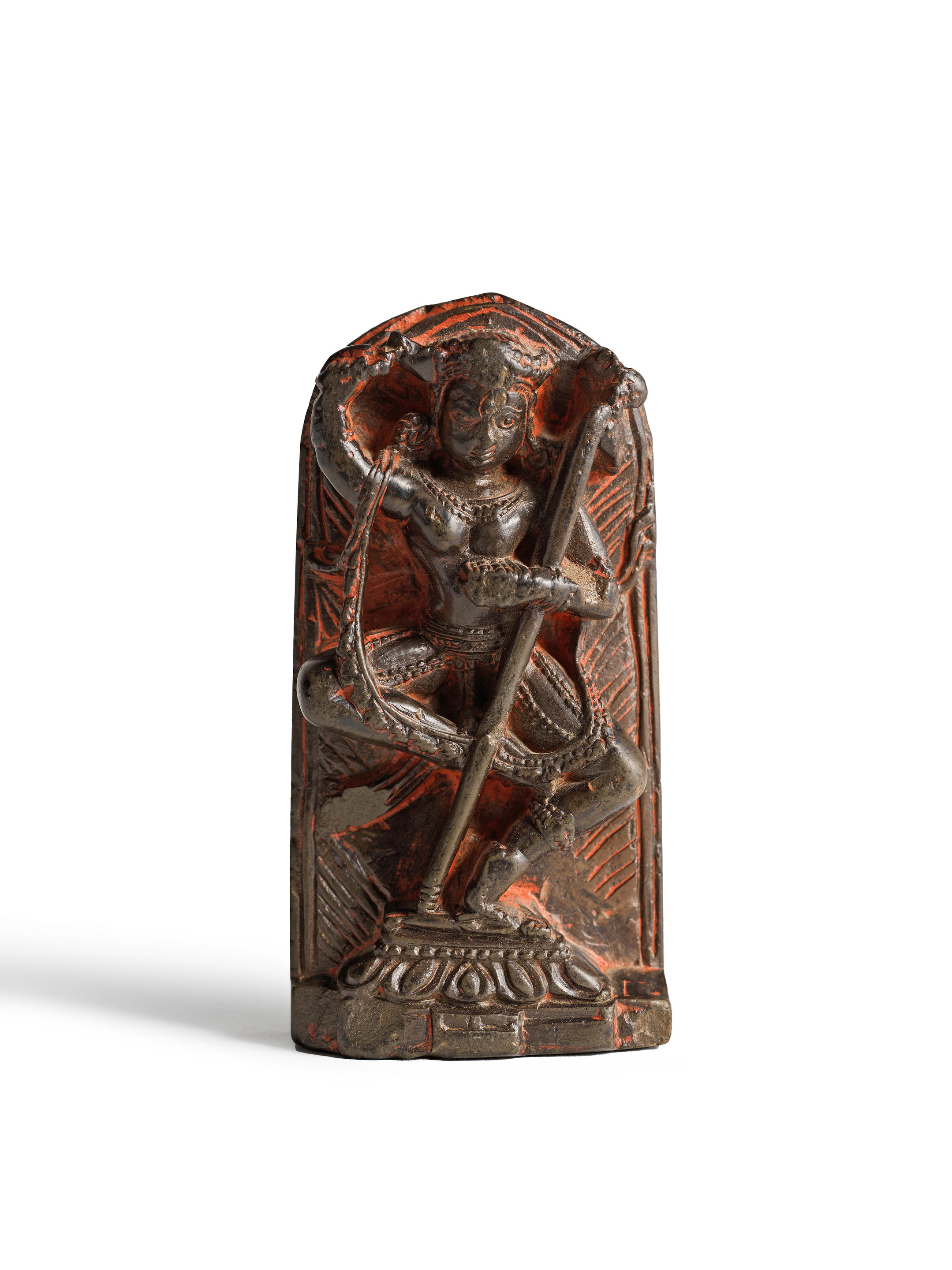

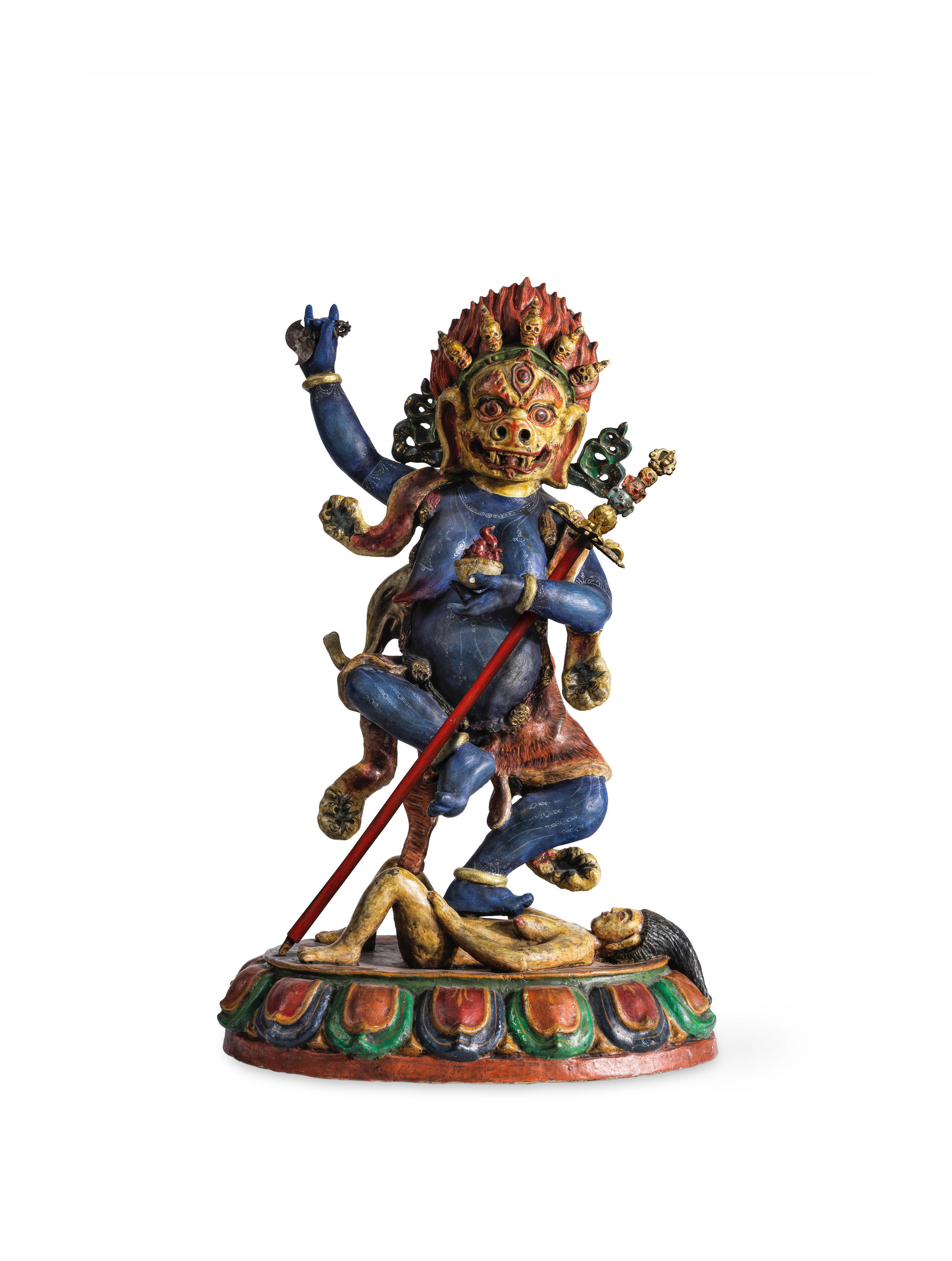
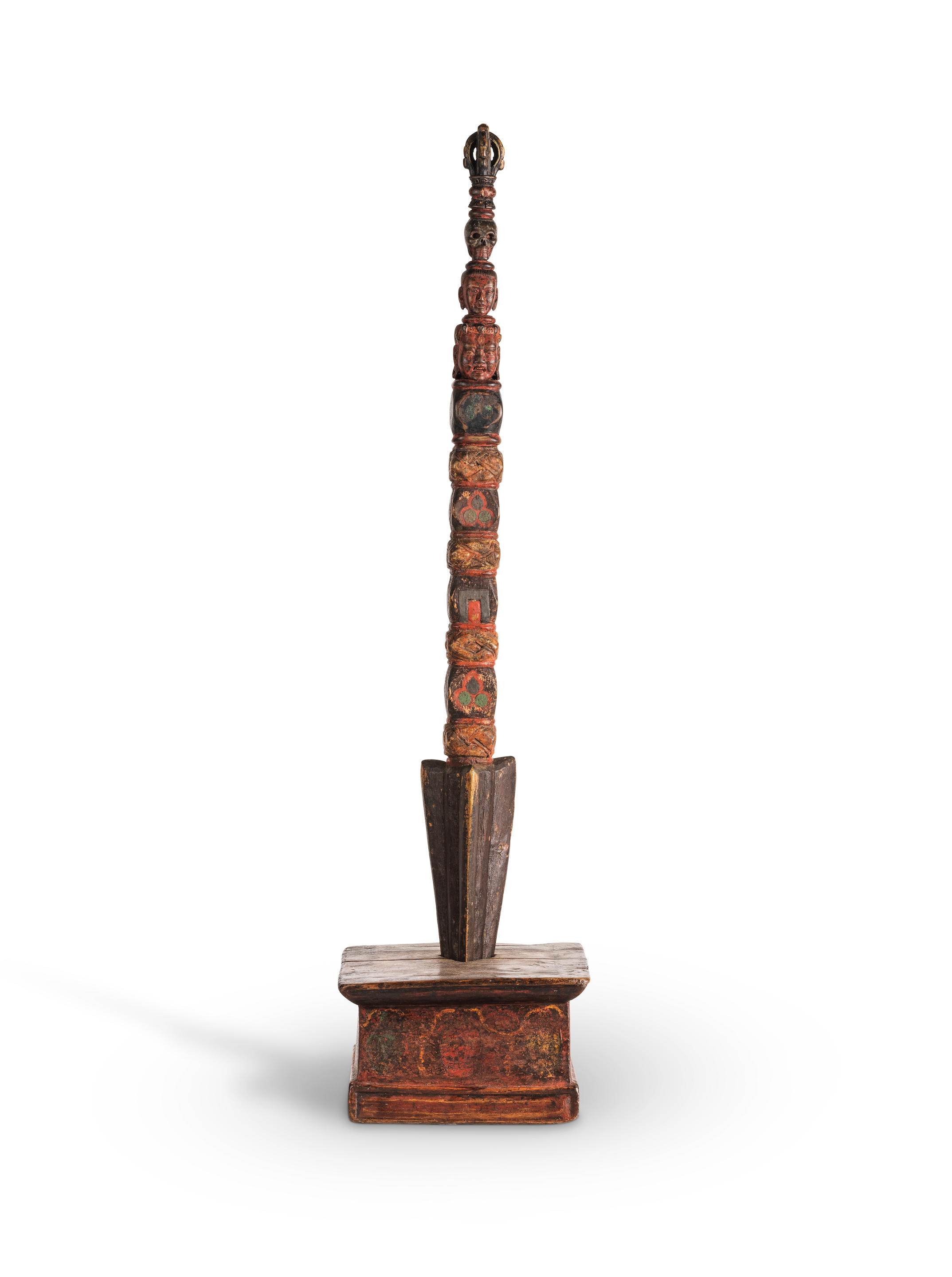

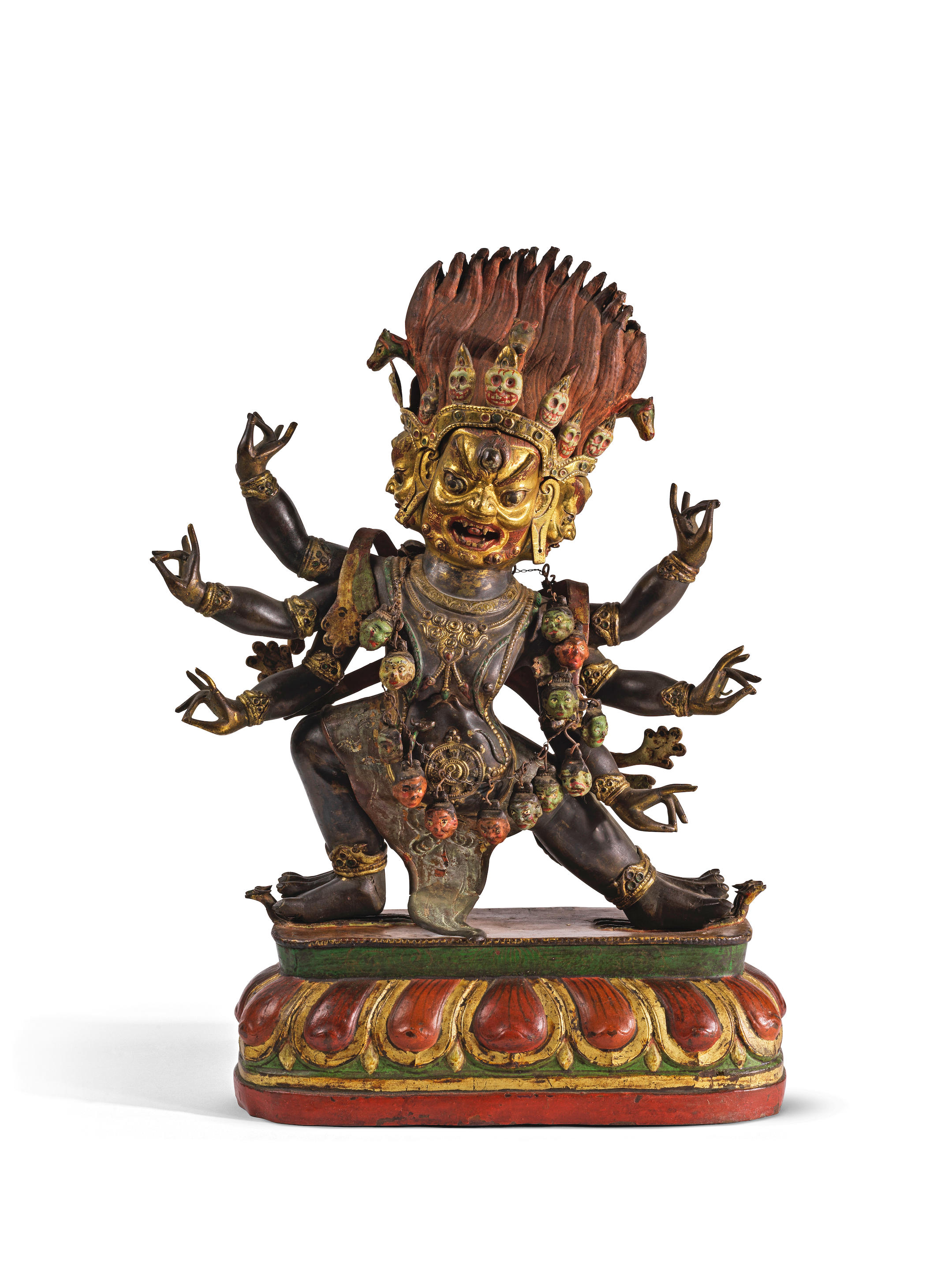
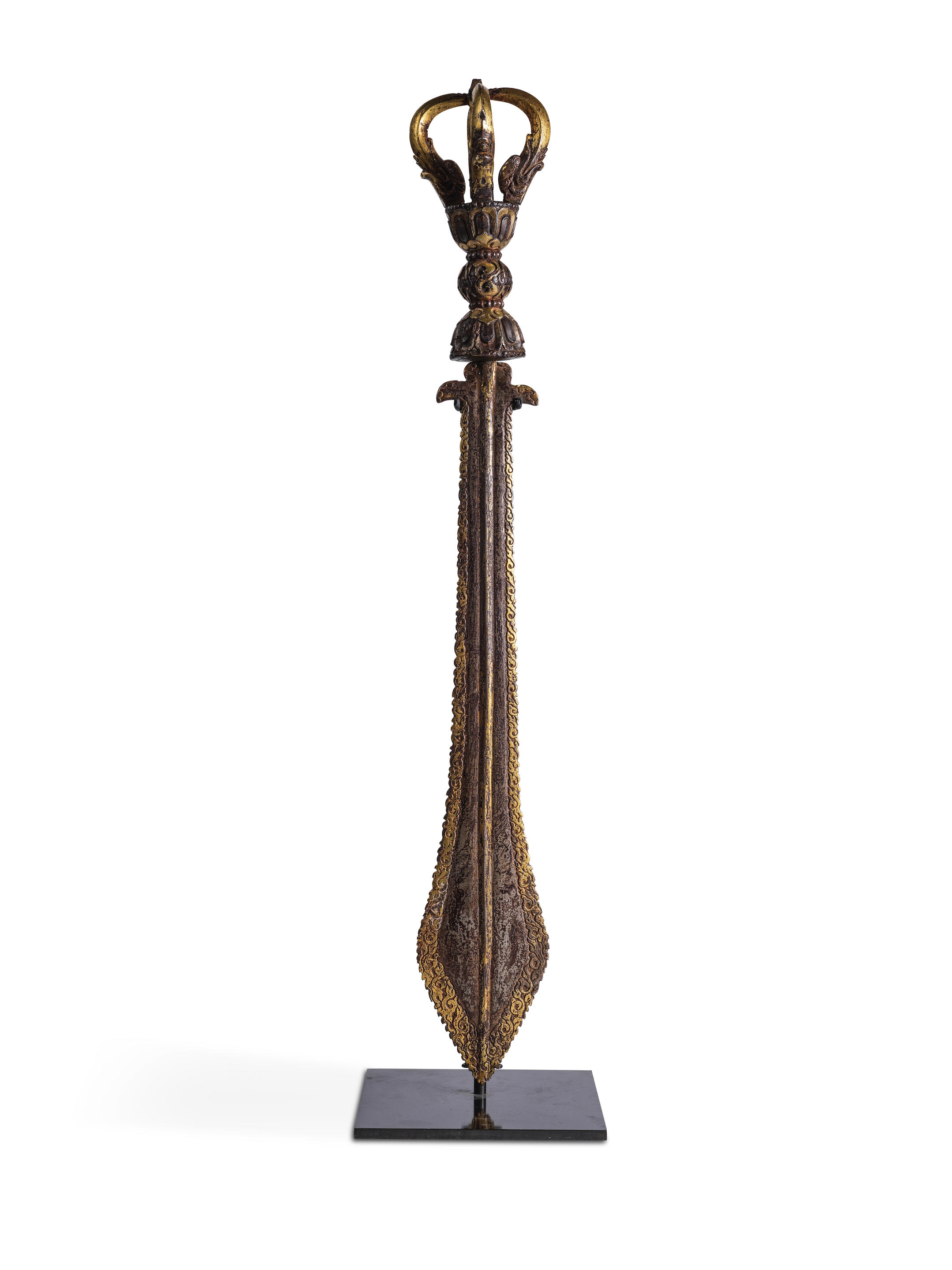

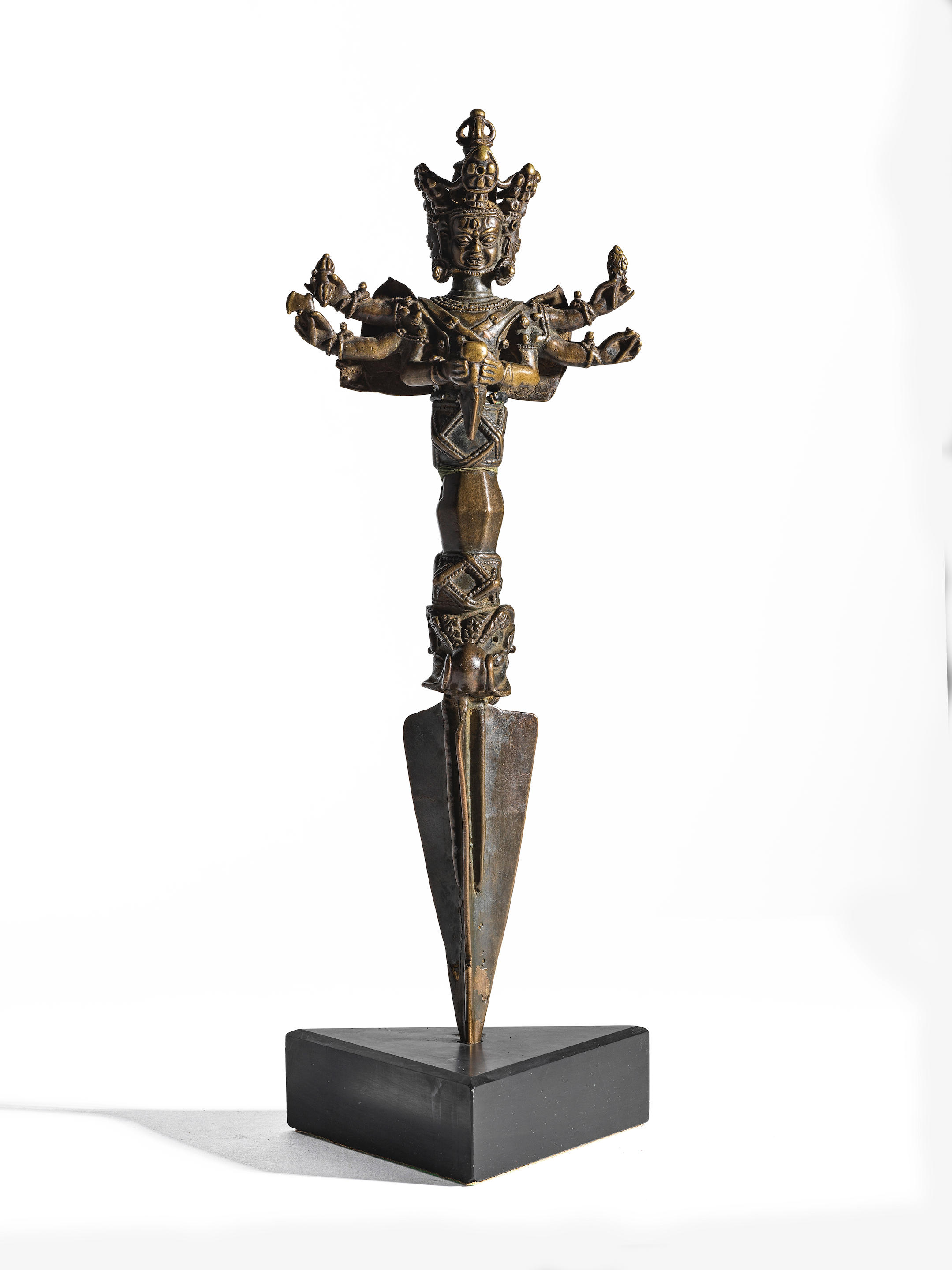
Testen Sie LotSearch und seine Premium-Features 7 Tage - ohne Kosten!
Lassen Sie sich automatisch über neue Objekte in kommenden Auktionen benachrichtigen.
Suchauftrag anlegen